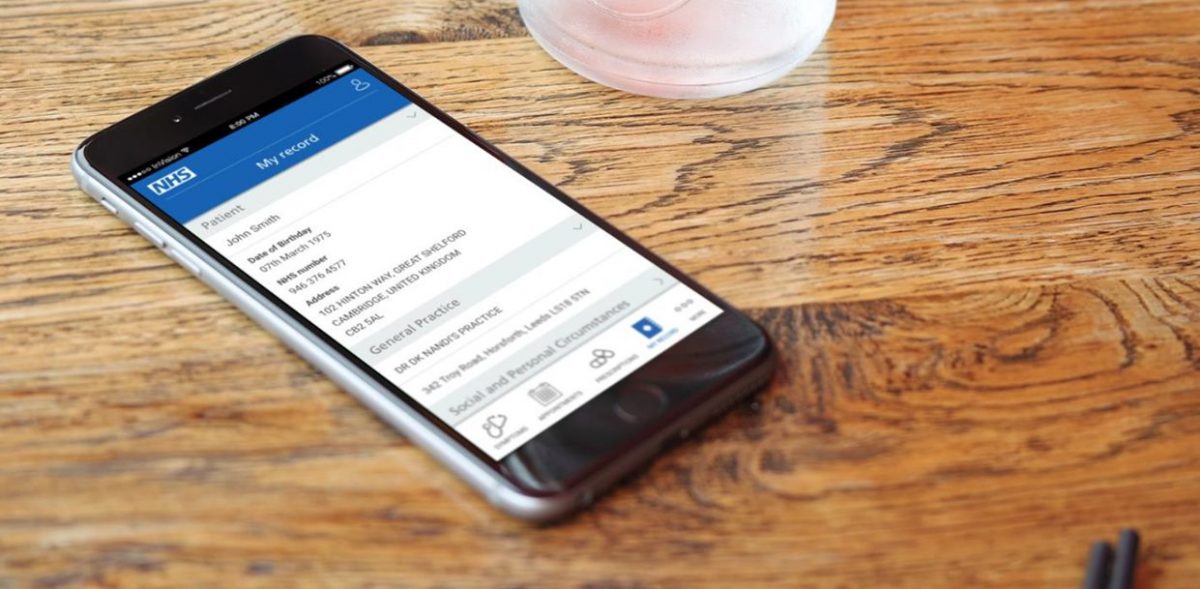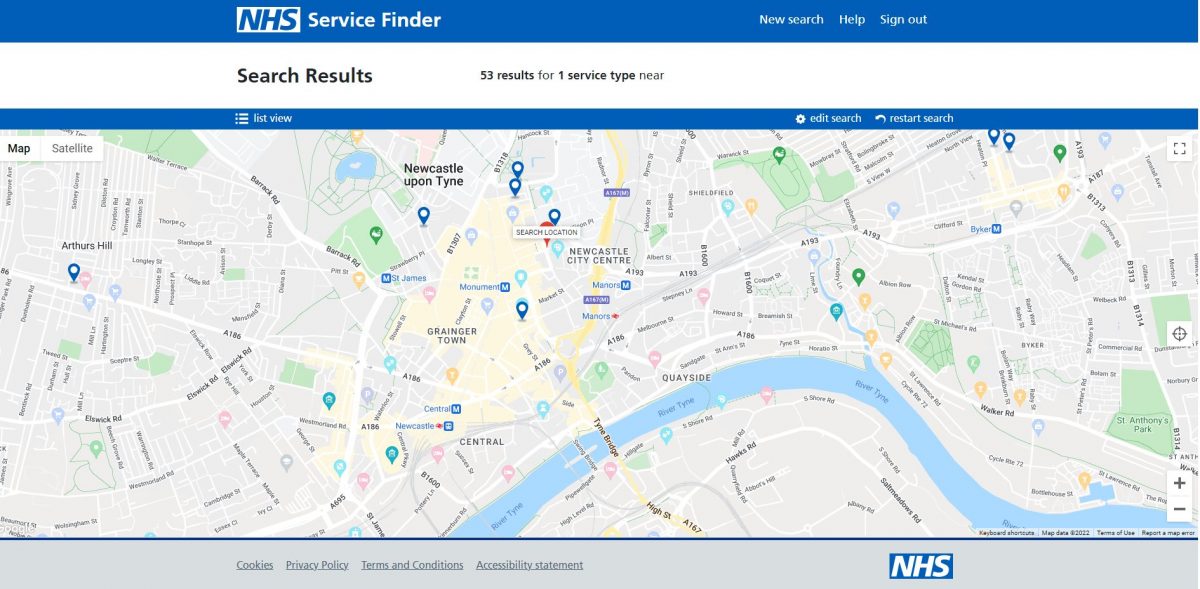Technical requirements and standards
Published on: 10th September 2014 | Updated on: 10th September 2022
 Pharmacy and prescribing system suppliers align with minimum requirements (e.g. EPS specifications) that set out what must, should, and can be done.
Pharmacy and prescribing system suppliers align with minimum requirements (e.g. EPS specifications) that set out what must, should, and can be done.
Suppliers also can innovate beyond what is specified based on user requests e.g. improving usability, and based upon user feedback to them. Community Pharmacy IT Group supports pharmacy systems (and systems within other health care settings) integrating with NHS IT and other IT that enables pharmacy teams to further optimize the care they can provide for their patients.
This webpage for pharmacy contractors and suppliers sets out some of those integrations and technical requirements that enable pharmacy systems to work with other IT.
See also: Overview about standards and interoperability.
A-Z
The creation of Application Programming Interfaces (APIs) along with specifications and technical requirements can help provide system suppliers with a blueprint for inter-operating.
In some cases NHS Digital may be involved with being commissioned to develop APIs and make these available for system suppliers to make use of.
See the Apps webpage and its sections: Apps standards and Developer info.
NHS Digital’s Booking and Referral Standard (BaRS) aims to enable booking and referral information to be sent between NHS service providers in a format useful to clinicians. The intentions are that it will eventually be available in all care settings. Pharmacy use cases are currently being considered – including the potential for referrals from NHS 111 to community pharmacy.
NHSE&I is developing a standards roadmap to go live in April 2022 which will provide a list of proposed and developing data, information and technical standards, including potential changes to existing standards. BaRS is listed as a major priority.
There are other booking and referral standards aside from BaRS: e.g. 111CDA over Interoperability Toolkit (ITK), CareConnect Booking, GP Connect and NHS e-Referral Service (e-RS). The BaRS team have an ambition that BaRS will be compatible and integrate with other formats.
Additional guidance for suppliers about BaRS is available on NHS Digital’s website: Implementation guide, BaRS core and BaRS Application catalogue. See also: BaRS supplier status.
PRSB continues to develop this standard that sets out how communicate electronic referrals e.g. from GPs to hospitals.
Read more at: PRSB’s Clinical Referral Info webpage.
See: Computable dose instructions and PRSB’s Digital medication information assurance standard.
Health Developer Network (HDN, developer.nhs.uk) includes info, links and tools to help developers create software for health and social care.
HDN API hub contents
The HDN API hub has included.
Assessment, Discharge and Withdrawal
Information required to build ADW Messages to support the exchange of structured information between healthcare and social care organisations.
Clinical Decision Support
Implementation guidance for the Clinical Decision Support APIs
Clinical Documents
FHIR Profiles for the exchange of clinical documents.
Clinical Documents (CDA)
CDA specifications have now been deprecated and replaced with a FHIR based specification.
Development and Testing Tooling
A set of tools for developers to assist with the testing of FHIR based specifications.
Diagnostic Data Services
Diagnostic Data Services report message
Digital Child Health
Information required to build and send the Digital Child Health event messages.
Digital Maternity
Information required to enable the exchange of Digital Maternity data.
Digital Medicines
FHIR specifications and implementation guidance.
Directory of Services
APIs provided by the Directory of Services for accessing service information
End of Life
Information required to build and send the End of Life atomic units of information.
EPS Dispensers Directory of Service
API providing information about EPS dispensing services and includes search functionality which lists dispensers who should be able to provide dispensing services for a patient with a given location and urgency.
EPS Tracker
Access to non-confidential metadata for electronic prescriptions managed through the national Electronic Prescription Service.
Events Management
Information required to publish, subscribe and receive event messages to and from the Events Management Service.
FGM
Messaging for the national Female Genital Mutilation Risk Indication System
FHIR Reference Server
This FHIR server acts as a reference server for all nationally defined FHIR profiles and value sets for use across a range of local and national FHIR implementations.
GP Connect
GP Connect aims to support better clinical care by opening up information and data held within GP Practice IT systems for use across health and social care.
Interoperability Toolkit (ITK)
The ITK is a set of common messaging specifications, frameworks and implementation guides to support interoperability within local organisations and across local health and social care communities.
Message Implementation Manuals (MiMs)
The MiM is the formal specification of the HL7v3 messaging on the Spine.
MESH API
The Message Exchange for Social care and Health (MESH) component of the Spine allows messages and files to be delivered to registered recipients. This is the HTTP API used by MESH.
NHS Identity
NHS Digital’s implementation of the OpenID Connect API specifications for authenticating health and care professionals.
NHS e-Referral Service
The NHS e-Referral Service has released a range of Application Programming Interfaces (APIs) and Ecosystem resources to support third party solution integration.
National Data Opt-Out
The National Data Opt-out Programme has defined an API to capture a patient’s preferences for use of their data, which will be held in a national data store on the Spine. Initially, this API will be used by a new national portal, but in future it will be made available to other consumers to manage these preferences for a patient.
National Early Warning Score (NEWS2)
NEWS2 is the latest version of the National Early Warning Score (NEWS), this improves the detection and response to clinical deterioration in patients and is a key element of patient safety and improving patient outcomes.
National Population Failsafe Management
National Failsafe Population Management is intended assist with population tracking and population screening, for example via the National Failsafe Alert.
National Pathology
The National Pathology FHIR Messaging Specification supports the ability to share pathology results in NHS primary and secondary care settings. This release focuses on haematology and clinical biochemistry (also known as chemical pathology) test reporting.
National Record Locator
The National Record Locator aims to provide healthcare professionals and providers with a facility to identify and locate ‘local’ patient records which have been registered on the service
NHS Website APIs
API developer portal for NHS Choices APIs.
NHS Scheduling (and appointments)
Profiles to allow searching for free slots and booking appointments.
Organisation Data
The data provided via this API is taken from the data managed by the Organisation Data Service (ODS) within NHS Digital.
Spine Core FHIR Framework
The Spine Core FHIR API Framework provides common behaviours and services used across FHIR APIs delivered on Spine. This specification also covers other Spine services that complement or are used alongside Spine FHIR APIs.
Spine Mini Services
Spine Mini Services
Transfer of Care
Information required to build Transfer of Care Documents for several areas of care.
For up-to-date HDN info read more at HDN (developer.nhs.uk).
The NHSX DTAC helps staff, patients and citizens identify digital health tools which are determined as meeting a baseline level of requirement for clinical safety, data protection, cyber security, interoperability and accessibility. For more about the DTAC read details within the ‘App standards’ section of the Apps webpage (even though the DTAC relates to apps and other technologies).
See CPCF section.
The NHS standard dictionary for medicines licensed in the UK. Electronic systems that exchange or share information about medicines relating directly to a patient’s care must adhere to this standard by using dm+d identifiers and descriptions when transferring information.
The Directory of Services (DoS) contains information for a wide range of health and care services across England e.g. opening hours, services available etc.
The DoS provides APIs to allow third party systems to retrieve service information from the DoS. Read more about DoS and Application Programming Interfaces (APIs).
Only users who comply with the DoS acceptable use policy are allowed to use the DoS.
Read more at:
See: Computable dose instructions and PRSB’s Digital medication information assurance standard.
NHS Digital EPS specs
- All EPS specs (and archived EPS specs);
- Dispensing system spec;
- Dispensing token spec (relates to paper only at present);
- Prescribing systems spec; and
- Prescribing token spec (relates to paper only at present).
EPS endorsing guide
NHS Business Services Authority (NHSBSA) maintain the EPS endorsing guide.
NHSBSA endorsing guide specification (webpage and pdf document).
NHSBSA engage with stakeholders prior to making changes to the EPS endorsing guide specification. Prescribing and pharmacy system suppliers have been asked to align to the EPS endorsing guide.
See also: EPS endorsing and submission.
EPS Tracker and other requirements
Systems may also integrate with EPS Tracker and other EPS Application programming interfaces.
- EPS identifiers – key information and info about identifiers within EPS HL7 messages.
- EPS developers library (developer.nhs.uk)
- EPS Tracker Application programming interface (API) – An EPS Tracker Application programming interface (API) exists so pharmacy system and software suppliers might build a bulk query interface in the future if wished.
Digital token future standards
Community Pharmacy IT Group (CP ITG)’s updated Views on the next generation of EPS had set out priority items for exploration including: “Enable paperless prescription processing (digital tokens developed and suitable guidance and standards in place) (EPS Phase 4 prescriptions and NHS Digital token specification [2008] updated to specify digital token requirements).”
Some GP practice apps might display barcodes and IDs but may do so without those digital tokens having been formally approved by NHS Digital, given that the current Token specs outline paper requirements.
CP ITG past feedback about digital tokens is set out here.
CP ITG is keen to hear any other views about Phase 4 digital tokens, and other prescribing / dispensing digital tokens. Contact it@cpe.org.uk if you’d like to submit views about future token standards – e.g. for items which NHS Digital could consider adding to the future Digital token specifications. See also: cpe.org.uk/tokens.
Outlines public health impact ‘pathways’ to support pharmacy teams and others to record what they ‘do’ in their interactions with patients, what data can be collated and also the possible impacts from these interactions. These pathways could be of interest to pharmacy contractors and their system suppliers. The pathway templates include: Obesity, alcohol, dementia, and smoking.
A platform specification that defines a set of capabilities used across the healthcare process, in all jurisdictions, and in lots of different contexts.
See: FHIR standard
Allows patients’ electronic health records to be transferred directly, securely, and quickly between their old and new practices, when they change GP practices.
See: GP2GP service
GP Connect is an NHS Digital managed service that currently allows GP practices and certain other authorised clinical staff to share and view certain appointments information, electronic health records information and data between IT systems.
It uses standards that enable interoperability between different clinical systems (e.g. it can facilitate collaborative work of two sets of GP practice staff that use two different GP systems).
Read more at:
Direct notifications can be communicated between clinical IT systems (e.g. from pharmacy system to GP practice system) to improve patients’ experiences and care outcomes, and to bring other health-related benefits.
The Professional Record Standards Body (PRSB) has worked with NHS Digital, Community Pharmacy England, clinicians from across primary care, and others to develop several standards for electronic transfer of information which could be sent from pharmacy systems to GP practice systems.
The use of Flu vaccination service PRSB-developed notification is currently being piloted by NHS Digital within Leeds and further information is set out below.
NHS Digital’s Digital medicine specification versions includes developed specifications to support communication of:
- Pharmacy immunisation administration (including flu vaccination)
- Pharmacy emergency medication supply
- Pharmacy New Medicine Service (NMS)
- Pharmacy medication review
- Pharmacy digital minor illness referral service
- Pharmacy appliance use review
Read more at:
- GP notifications from pharmacy systems (Community Pharmacy England)
- Guidance for suppliers (NHS Digital) – including link to developer.nhs.uk APIs.
See: Notifications from GP practice systems to pharmacy systems.
See also: CPCS section.
Community Pharmacy IT Group (CP ITG) has supported the move of pharmacy systems so these can be used on hand-held devices including the use of NHS IT systems such as EPS, SCR and PMR work to enable elimination of need for paper and more use of mobile devices.
See NHS Identity section of this webpage (or the NHS Identity webpage), for more about some of the technical requirements.
Dedicated to providing a framework and related standards for the exchange, integration, sharing, and retrieval of electronic health information.
See: HL7 UK
IM1 pairing standards can help integration with NHS Patient Facing Service (PFS, ‘online services’). It also is a technical tool and process that allows digital suppliers to directly talk to GP clinical systems, both reading data from the systems and putting data into the systems.
See: IM1.
The Interoperability Toolkit (ITK) is a set of common specifications, frameworks and implementation guides. It supports system standards and interoperability within local organisations and across local health and social care communities.
The Community Pharmacy IT Group (CP ITG) has discussed with pharmacy system suppliers the need for greater alignment with ITK technical requirements.
Read more at:
In the future, pharmacy system suppliers as well as other clinical system suppliers may be able to display information from LHCRs. Initially it is expected LHCRs will mainly be used in many sectors via online portal systems.
Integration standards: Community Pharmacy IT Group (CP ITG) have identified that there needs to be a standard approach for supplier integration with any LHCR system so that the same supplier can easily integrate with many of the LHCR systems if integrated with a single one of them. This feedback was passed to NHS Digital to help inform its standards work.
Read more at:
See:
- Discharge Medicines Service (DMS) MYS API (above)
NHSX commissioned NHS Digital to produce an Information Standard which puts in place definitions that could be used when a health professional sends or receives patient medication and allergy/intolerance information, by computer system, between care locations.
NHS Digital initially published the standard on 30th September 2021 and proposed an implementation period of 1st October 2021 to 31st March 2023.
CP ITG suppliers were notified about the standard and some related engagement opportunities which were to occur near the time of the standard’s initial publication.
Read more: Medicine and Allergy/Intolerance Data Transfer.
If you’d like to feed into the standard’s development for Community Pharmacy England and CP ITG please contact it@cpe.org.uk.
System suppliers and developers may look for opportunities to integrate their systems or apps with NHS App.
Read more at:
NHS Identity is an authentication system being piloted that provides a small number of health and care professionals in England to prove their identity when accessing national clinical information systems e.g. Summary Care Record (SCR).
NHS Identity will continue to be expanded and other developers such as Patient Medication Record (PMR) system providers or website developers may consider integrating with it in the future or using other authentication options.
Read more at:
NHS Digital have enabled a single system for verifying the identity of those requesting access to digital health records and services, to authenticate people for access to information about themselves and those they care for. NHS login will support future NHS Digital national programmes, local initiatives.
Read more at:
- NHS login (Community Pharmacy England)
- NHS login (NHS Digital)
- NHS login (nhs.uk)
- NHS login information for developers (developer.nhs.uk)
CP ITG’s PMR wishlist included NHSmail integration as a highly requested item.
NHSmail may support the sending of secure mobile messages to patients or other health and care organisations.
Read more at:
See information on the NHSmail webpage about how: System suppliers or contractors may set-up application accounts for pharmacy contractors so that the clinical system can auto-send SMS text messages to patients (e.g. medicines ‘being prepared’, ‘ready for collection’ or ‘delivered’).
The NHS Number is the unique patient identifier in operation in the NHS. It is used to efficiently share patient information across and within organisations. It is composed of ten digits: e.g. 123 456 7890
See: NHS number
See: Patient Facing Services.
Community Pharmacy IT Group (CP ITG) previously supported developing a recommended minimum dataset for cases where a pharmacy contractor has switched from one PMR system to another. For the sake of continuity of patient care, it is critical for some patient information to be transferred from the old to the new system.
Community Pharmacy England has worked with a CP ITG sub-group on a minimum dataset and associated transfer specification document:
Pharmacy patient IT system transfer (CP ITG specification)
CP ITG Pharmacy IT system transfer spec (Appendix 1 – dataset)
Timelines: The ‘latest start date for use of this specification’ is 1st July 2024, although suppliers should use it before this time wherever possible, if not already doing so.
If upon suppliers use of this, suppliers discover further enhancements should be considered, please let the CP ITG sectariat know, and non-urgent revisions can be grouped and considered at six monthly intervals – e.g. change requests received by 30th April 2024, change requests received by 30th October 2024.
It becomes ever more critical that pharmacy teams get the most out of their patient medication record (PMR) systems and help to feed into the development of those by emailing their system suppliers and also sharing feedback to help further develop the wish list.
Following discussions at its meetings and feedback from pharmacy teams, the Community Pharmacy IT Group (CP ITG) published:
The contractor code is a pharmacy’s unique identifying code which appears at the top of the schedule of payments document that is received from the Pricing Authority each month. The code is officially known as the ODS code, and was previously called the OCS code, NACS code or F code.
See: ODS (F) code
Real Time Exemption Checking (RTEC) is a technical solution enabling the PMR system to automatically find out whether a patient has a known exemption that can auto-apply to their EPS prescription. If the PMR system confirms an exemption, the EPS prescription is auto-flagged as exempt so that the patient won’t need to make a written exemption status declaration. If the system cannot identify an exemption the pharmacy team and the patient will use the usual process.
Read more at:
NHS Scheduling API information is held at Health Developer Network’s (HDN, developer.nhs.uk) API hub.
See also: the GP Connect section of this webpage. GP Connect standards include scheduling ones.
SNOMED CT (clinical terms) is a clinical vocabulary readable by computers. SNOMED was an acronym for Systematized Nomenclature Of Medicines. SNOMED CT is largely considered as a brand name rather than an acronym.
It is used in electronic health records, SNOMED CT is the most comprehensive and precise terminology product in the world, with extensive adoption across the globe.
SNOMED CT gives clinical IT systems a single shared language, which makes exchanging information between systems easier, safer and more accurate. It contains all the clinical terms needed for the whole NHS, from procedures and symptoms through to clinical measurements, diagnoses and medications.
In England, all GP systems capture clinical terms using SNOMED CT. The UK edition of SNOMED CT also contains the UK extensions. These provide terms specifically required in the UK, such as UK screening procedures, assessment scales and British English spellings.
Read and learn more:
System suppliers can integrate the use of SCR information so that SCR information can be accessed more quickly and easily for when required.
All pharmacy EPS suppliers were provided with details about how to integrate SCR 1-click and some suppliers have started to integrate.
Read more at:
NHS applications require certain internet browser versions, windows versions and settings. The standard NHS system settings are determined by NHS Digital’s Warranted Environment Specification (WES) information. Read more at: cpe.org.uk/settings.
Additional related Community Pharmacy England webpages:
- System suppliers
- Pharmacy-related systems and apps
- Pharmacy system: requested features and development
- List of system suppliers and their contact details.
- Report or feed back about EPS/IT
Disclaimer: Those technical requirements available continue to develop. This webpage is not comprehensive and fuller or newer info may be held: by NHS Digital, at the NHS Digital website, at the developer.nhs.uk website and elsewhere. NHS Digital frequently have a role with developing NHS IT technical requirements when they are commissioned to do so.
If you have queries on this webpage, or wish to suggest possible specification changes (in case of future amendment opportunities) or you require more information, please contact it@cpe.org.uk. To share and hear views about digital developments, join the CP Digital email group today.
Return to the Pharmacy IT hub; Standards & interoperability; or IT a-z index












